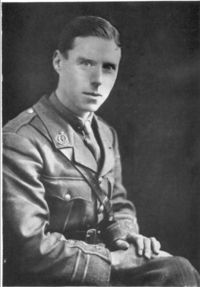Brown Institution
The Brown Animal Sanatory Institution (1871-1944) was a remarkable, but short-lived and now largely forgotten veterinary center of research and clinical practice. As well as providing a broad-based clinical service for the surrounding area of London, the Brown Institution was also the home of some of the most distinguished contributors to comparative medicine and physiology.
Origins
The Institution arose from a charitable trust under the will of Thomas Brown. Brown, about whom very little is known, was said to have been a lawyer, although there is little evidence to support his association with either the legal profession or the city of London. What is clear however, are the very specific terms of his will and the use to which £20,000 left to the University of London were to be put. Initially, the money was to be invested for 15 years, after which time the accumulated sum was to be spent within 4 years on "founding establishing and upholding an institution for investigating, studying and, without charge beyond immediate expenses, endeavouring to cure maladies, distempers and injuries any quadrupeds or birds useful to man may be found subject to."
Early years
The institution's first professor-superintendent was Sir John Burdon-Sanderson, who also provided a significant financial contribution for purchasing the land on which the institution was built. Because of the involvement of Burdon-Sanderson, and his medically-trained colleagues, there was, prior to the opening of the Brown Institution, a subtle shift in the emphasis in its objectives towards comparative pathology and especially diseases that would have a direct bearing on the well-being on human health.
As a research center for comparative pathology, this was the first such institution of its kind created in the UK, and in many ways it served as a forerunner for the more celebrated Pasteur Institute in Paris and a similar establishment founded by Robert Koch in Berlin, that were to emerge in the following decades.
Veterinary medicine
A major activity of the Brown Institution was veterinary medicine. The hospital dealt with 4,000 cases a year for the first 20 years, 8,000 cases a year for the next 20, before declining to less than 1000 at the time of closure in 1939. The reason was primarily the shift from horses to automobiles in the first half of the 20th century, significantly reducing the number of horses needing care. Moreover the neighborhood changed from private houses to flats that generally prohibited companion animals, such as dogs and cats.
A pioneering research institution
Burdon-Sanderson, the first superintendent emphasized physiology and comparative pathology, and during his tenure he worked on a variety of diseases, many of public health importance, including anthrax, contagious bovine pleuropneumonia, rabies and cattle plague. Burdon-Sanderson's successor, William Greenfield, worked on anthrax, and succeeded in producing an attenuated vaccine before Pasteur, a feat not widely acknowledged either now or at the time. The 4th superintendent, a prominent neurophysiologist named Victor Horsley, performed key work on functional localization in the cerebral cortex.
Horsley's successor was Charles Scott Sherrington. Sherrington used reflexes in the spinal cord as a way of investigating the general properties of neurons and the nervous system. These experiments led him to postulate "Sherrington's law of reciprocal innervation," which states that for every neural activation of a muscle, there is a corresponding inhibition of the opposing muscle. Sherrington is also known for his study of the synapse, a word which he coined for the then-theoretical connecting point of neurons. Sherrington was awarded the Nobel Prize in 1932 "for discoveries regarding the functions of neurons" and is generally regarded as one of the Fathers of Neuroscience.
The 8th and final superintendent of the Brown Institution was Frederick Twort, whose tenure spanned 1909 to the institution's closure in 1944. Twort's major contributions were work on the nutritional requirements of bacteria, particularly leprosy and tuberculosis, and the discovery of bacteriophages, viruses that parasitize bacteria. Bacteriophages proved ideal model organisms for the study of genetics and molecular biology.
Decline and fall
Small and underfunded, the Brown Institution was unable to compete against similar organizations abroad, particularly the Pasteur Institute. Moreover, its parent organization, the University of London, lost interest, and failed to invest the necessary funds to permit the institution to remain competitive. This lack of interest may have stemmed from the University of London's disenchantment with the idiosyncratic research of its final superintendent, Twort. While Twort's first 10 years were marked by several significant discoveries, much of his later years were spent unproductively trying to grow viruses on artificial media and trying to discover the origin of viruses from precursor molecules. Furthermore, its practical reason for existence as a veterinary hospital became increasingly untenable as the number of domestic and companion animals in the vicinity declined. In 1944, the Institution succumbed to German bombs, and the University of London declined to rebuild it. However, its short tenure is noted for several major contributions to science, seven of eight superintendents were elected Fellows of the Royal Society and one (Sherrington) was awarded a Nobel Prize. The Brown Institution's lasting legacy may be its serving as a model for comparative medicine, exemplified today by the Pasteur Institute.
Reference
Franklin, R.J.M. 2000. The Brown Animal Sanatory Institution—Historical Lessons for the Present? The Veterinary Journal 159: 231-237. doi: 10.1053/tvjl.1999.0435



